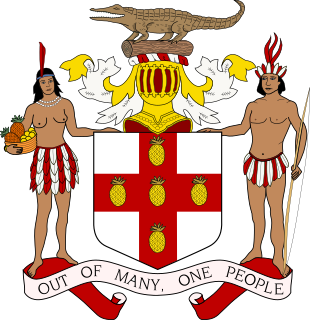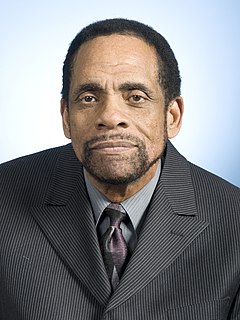
The Science, Technology and Innovation (STI) sector is guided by two primary institutions, the National Commission on Science and Technology (NCST) and the Scientific Research Council (SRC). Both are under the direction of the Ministry of Science, Energy, and Technology.

Photographic plates preceded photographic film as a capture medium in photography, and were still used in some communities up until the late 20th century. The light-sensitive emulsion of silver salts was coated on a glass plate, typically thinner than common window glass.

An autoradiograph is an image on an X-ray film or nuclear emulsion produced by the pattern of decay emissions from a distribution of a radioactive substance. Alternatively, the autoradiograph is also available as a digital image, due to the recent development of scintillation gas detectors or rare earth phosphorimaging systems. The film or emulsion is apposed to the labeled tissue section to obtain the autoradiograph. The auto- prefix indicates that the radioactive substance is within the sample, as distinguished from the case of historadiography or microradiography, in which the sample is marked using an external source. Some autoradiographs can be examined microscopically for localization of silver grains in which the process is termed micro-autoradiography. For example, micro-autoradiography was used to examine whether atrazine was being metabolized by the hornwort plant or by epiphytic microorganisms in the biofilm layer surrounding the plant.

Ellen Ochoa is an American engineer, former astronaut and former director of the Johnson Space Center. In 1993, Ochoa became the first Hispanic woman to go to space when she served on a nine-day mission aboard the Space Shuttle Discovery. Ochoa became director of the center upon the retirement of the previous director, Michael Coats, on December 31, 2012. She was the first Hispanic director and the second female director of Johnson Space Center.

Luther George Simjian was an Armenian-American inventor and entrepreneur. A prolific and professional inventor, he held over 200 patents, mostly related to optics and electronics. His most significant inventions were a pioneering flight simulator, arguably the first ATM and improvement to the teleprompter.

George Robert Carruthers was an African American inventor, physicist, engineer and space scientist. Carruthers perfected a compact and very powerful ultraviolet camera/spectrograph for NASA to use when it launched Apollo 16 in 1972. He designed it so astronauts could use it on the lunar surface, making all adjustments inside their bulky space suits. Upon instructions from Carruthers, they used the camera to record the Earth's outermost atmosphere, noting its variations, and also mapped portions of the far-ultraviolet sky recording stars and galaxies, and the gaseous media between them. In 1970, sending his instruments aboard Aerobee sounding rockets, he had demonstrated that molecular hydrogen exists in the interstellar medium. Among numerous citations and awards, in 2003, Carruthers was inducted into the National Inventor's Hall of Fame, and he received an honorary doctorate for Engineering from Michigan Technological University. He also was awarded the 2011 National Medal for Technology and Invention from President Barack Obama, "For invention of the Far UV Electrographic Camera, which significantly improved our understanding of space and earth science."

The history of photography began in remote antiquity with the discovery of two critical principles: camera obscura image projection and the observation that some substances are visibly altered by exposure to light. There are no artifacts or descriptions that indicate any attempt to capture images with light sensitive materials prior to the 18th century.

A timeline of United States inventions encompasses the ingenuity and innovative advancements of the United States within a historical context, dating from the Contemporary era to the present day, which have been achieved by inventors who are either native-born or naturalized citizens of the United States. Patent protection secures a person's right to his or her first-to-invent claim of the original invention in question, highlighted in Article I, Section 8, Clause 8 of the United States Constitution which gives the following enumerated power to the United States Congress:
To promote the Progress of Science and useful Arts, by securing for limited Times to Authors and Inventors the exclusive Right to their respective Writings and Discoveries.

Marietta Blau was an Austrian physicist credited with developing photographic nuclear emulsions that were usefully able to image and accurately measure high-energy nuclear particles and events, significantly advancing the field of particle physics in her time. For this, she was awarded the Lieben Prize by the Austrian Academy of Sciences. As a Jew, she was forced to flee Austria when Nazi Germany annexed it in 1938, eventually making her way to the United States. She was nominated for Nobel Prizes in both physics and chemistry for her work, but did not win. After her return to Austria, she won the Erwin Schrödinger Prize from the Austrian Academy of Sciences.
A nuclear emulsion plate is a type of particle detector first used in nuclear and particle physics experiments in the early decades of the 20th century. It is a modified form of photographic plate that can be used to record and investigate fast charged particles like alpha-particles, nucleons, leptons or mesons. After exposing and developing the emulsion, single particle tracks can be observed and measured using a microscope.

George Edward Alcorn Jr. is an American physicist, engineer, inventor, and professor. He taught at Howard University and the University of the District of Columbia, and worked primarily for IBM and NASA. He has over 30 inventions and 8 patents resulting in his induction into the National Inventors Hall of Fame in 2015.

Sarah Guppy, née Beach was an English inventor and the first woman to patent a bridge, in 1811. She developed a range of other domestic and marine products.

A timeline of United States inventions (1946–1991) encompasses the ingenuity and innovative advancements of the United States within a historical context, dating from the era of the Cold War, which have been achieved by inventors who are either native-born or naturalized citizens of the United States. Copyright protection secures a person's right to his or her first-to-invent claim of the original invention in question, highlighted in Article I, Section 8, Clause 8 of the United States Constitution which gives the following enumerated power to the United States Congress:
To promote the Progress of Science and useful Arts, by securing for limited Times to Authors and Inventors the exclusive Right to their respective Writings and Discoveries.

Valerie L. Thomas is an American scientist and inventor. She invented the illusion transmitter, for which she received a patent in 1980. She was responsible for developing the digital media formats image processing systems used in the early years of NASA's Landsat program.
William Ellis Glenn was an American inventor and Professor at Florida Atlantic University best known for his contributions to imaging technology. Glenn was awarded 136 U.S. patents, has worked as head of NASA Imaging Technology Commercial Space Center, as well as head of FAU's Imaging Technology Center and is among the most prolific commercially viable inventors in America. In 1978, the digital noise reducer invented by him, earned NYIT its first television Emmy award. Glenn directed NYIT's former Science and Technology Research Center in Florida, where he also developed his invention. The digital noise reducer received a patent in 3-D technology in 1979.

Bettye Washington Greene was an American industrial research chemist. She was the first African American female Ph.D. chemist to work in a professional position at the Dow Chemical Company. At Dow, she researched latex and polymers. Dr. Greene is considered an early African American pioneer in science.

Patricia S. Cowings is an aerospace psychophysiologist. She was the first American woman to be trained as a scientist astronaut by NASA; though she was an alternate for a space flight in 1979, she did not travel to space. She is most known for her studies in the physiology of astronauts in outer space, as well as helping find cures for astronaut's motion sickness.
Nellie Ivy Fisher (1907–1995) was a London-born industrial chemist and researcher who specialized in photographic chemistry and became known for her work in Australia as the first woman to lead a division of Kodak.















